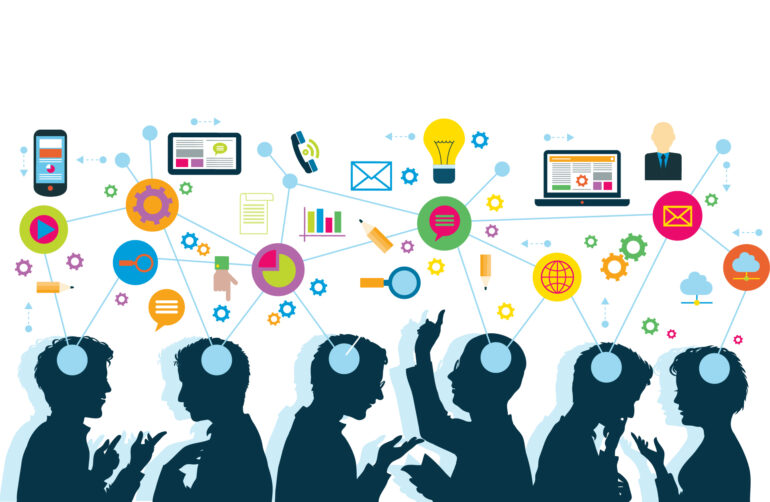The introduction of technology in education has ushered in an era of rapid evolution and innovation in teaching and learning. From online learning platforms to artificial intelligence, emerging technologies are creating new paradigms for delivering quality education while adapting to individual student needs.
This article explores some of the most promising technologies transforming modern education and how the technologies provide critical training for educators seeking to effectively leverage these advances.
Personalized Learning

Personalized learning leverages technology to tailor educational experiences to individual student backgrounds, interests, strengths, and weaknesses. Adaptive learning systems continually assess student progress and adjust the level or type of instruction to match.
This provides targeted remediation or acceleration as needed. Meanwhile, AI-powered tutors provide customized hints, explanations, and practice to support student growth. Creating individualized learning paths ensures topics are introduced when students are ready.
Personalized learning can make classrooms more student-centered and improve outcomes, especially for disadvantaged students. However, striking the right balance between technology and teacher guidance is vital.
Digital Learning Platforms
Online and blended learning has become a cornerstone of modern education, with digital platforms providing anytime access and enhanced collaboration. As online and technology-enabled education rapidly evolves, quality instructional design is crucial for effectively integrating emerging innovations.
Opting for an instructional design masters online plays a vital role by offering comprehensive training to guide strategic implementation grounded in timeless learning principles prioritizing engagement, outcomes, and inclusion.
With specialized knowledge and human-centered design perspectives, graduates drive progress as visionary leaders shaping technology-enriched teaching worldwide. These experts empower educators to continually adapt tools to diverse learner needs.
Gamification in Education
Gamification applies gaming principles like scoring, competition, rewards, and real-time feedback to drive engagement. Educational games and gamified platforms are increasing student motivation and enjoyment while promoting the development of skills like critical thinking, creativity, and collaboration.
Badging systems incentivize learners to complete tasks and achieve milestones. However, potential drawbacks like interference with organic learning, increased anxiety, and compromised data privacy should be addressed.
Overall, gamification shows immense potential but requires careful implementation informed by instructional design best practices.
Social Media in Education
Online social media platforms are playing a growing role across the educational landscape, enabling enhanced collaboration, professional development, and access to a global community of educators and experts. Students leverage social media for increased communication, collaborating on group projects, resource sharing, and conducting research.
Meanwhile, teachers participate in professional learning networks to discover new teaching strategies and best practices. Hashtags and online groups also unite educators to discuss ideas, trends, and challenges.
Data Analytics in Education

Vast quantities of data are generated as learners interact with online learning systems and educational software. The field of learning analytics applies computational analysis to this data to uncover patterns and predict future outcomes.
By detecting gaps in understanding, student data can inform early intervention and remediation. It can also shape personalized recommendations regarding resources and activities. Analytics likewise helps teachers reflect on their curriculum and instructional methods.
However, ethical usage of analytics data is paramount, given privacy concerns. Students should feel empowered by, not judged based on, the data collected about their learning.
Artificial Intelligence in Education
Artificial intelligence (AI) is supporting educators through automated grading of student work, generating personalized recommendations, anticipating future performance, and more.
AI tutors simulate human experts with conversational interactions, hints about problem-solving strategies, and detailed explanations of concepts. Such systems enable round-the-clock academic support with endless patience.
AI also allows assessment to be integrated seamlessly into the learning process for timely feedback. Natural language processing further enables software to evaluate written work fairly and consistently.
However, the data-driven nature of AI demands vigilance regarding issues like bias and accuracy.
Blockchain in Education
Blockchain, the underlying technology enabling cryptocurrencies like Bitcoin, is poised to disrupt higher education. Blockchain provides permanent, secure records stored across decentralized networks.
This allows schools to issue digital credentials that validate academic qualifications and build comprehensive learner profiles showcasing a wide range of competencies and achievements. Students can share these verified credentials easily with employers and other institutions.
This gives unaccredited programs a way to highlight quality and career relevance. It may also reduce education fraud. As the job market evolves, blockchain technology can empower students and offer new paradigms for credentialing.
Internet of Things (IoT) in Education

The Internet of Things (IoT) refers to the growing array of internet-connected physical objects embedded with sensors, software, and other technologies. In education, IoT includes building-wide smart climate control systems, security mechanisms, and lighting automation.
Connected devices for real-time attendance tracking, equipment monitoring, and accessing resources like 3D printers also fall under the IoT umbrella. Classroom clickers, wearable technology, and other networked devices are enhancing interactivity while generating actionable data.
However, technical complexity, interoperability challenges between devices and platforms, and cybersecurity risks need to be managed appropriately.
Cybersecurity in Education
Safeguarding student data and educational technology infrastructure from cyber threats like hacking, viruses, and unauthorized access is critically important. Millions of students worldwide rely on the security of digital systems for essential tools like admissions and financial aid portals and learning management platforms housing sensitive personal information.
Unfortunately, many educational institutions lack robust mechanisms for the detection and prevention of data breaches.
Ensuring strong cybersecurity and data privacy protections must be a top priority while cultivating learners’ own digital citizenship skills through cyber safety and security lessons.
Challenges and Considerations
While technology enables educational innovation, challenges around over-automation, data ethics, and equitable access warrant careful attention. Over-automating risks compromising interpersonal skills nurtured by time-tested teaching methods.
The proliferation of algorithms and analytics also raises fairness and transparency concerns. Further, unreliable technology access among disadvantaged students prevents emerging tools from fully and equitably serving all learners until underlying infrastructure inadequacies are resolved.
Even personalized adaptive platforms focused solely on academic metrics fail to holistically recognize student diversity across critical dimensions.
Conclusion

Realizing educational technology’s full potential relies on high-quality instructional design, facilitating balanced classroom integration of cutting-edge innovations with timeless teaching principles focused on inclusion and personalized learning.
Comprehensive online master’s programs train graduates to serve as visionary leaders equipped to guide the future of technology-enriched teaching.
